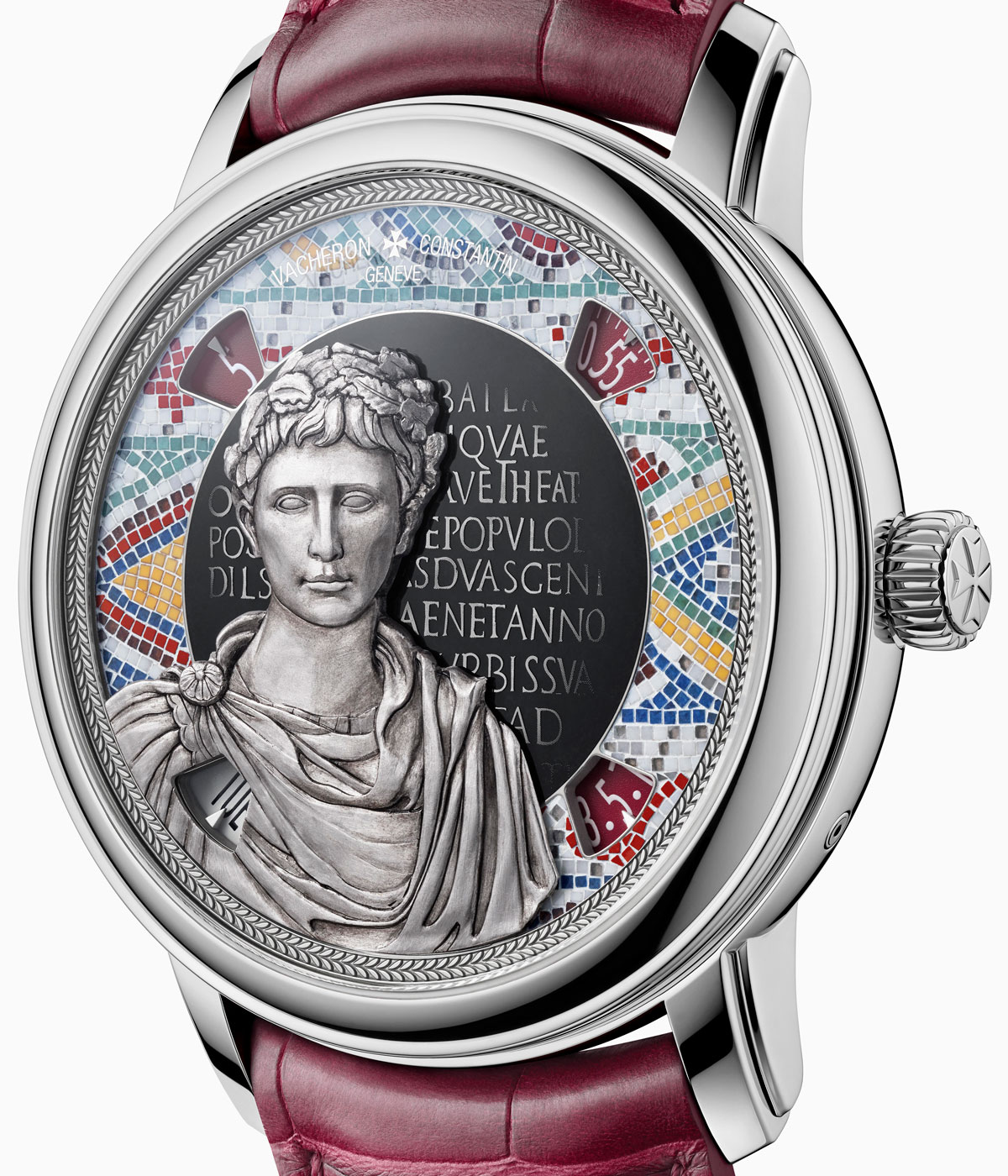Vacheron Constantin and the Louvre create limited-edition watches
Vacheron Constantin and the Louvre have worked together to create four Métiers d’Art watches, each paying tribute to an ancient civilisation, in an incredible feat of craftsmanship

Born of a shared focus on cultural heritage and a commitment to traditional artistry, the partnership between Vacheron Constantin and the Louvre, dating back to 2019, is an organic one. Their latest project, a close collaboration between the maison and the museum’s curators and historians, has culminated in a series of four Métiers d’Art watches.
Each piece – part of a limited edition of 20 as a whole, with five of each piece available – pays tribute to a different ancient civilisation. ‘There is an authenticity to our partnership with the Louvre,’ says Vacheron Constantin CEO Louis Ferla. ‘It goes beyond making watches; there is an exchange of knowledge there and it is a fantastic source of inspiration for us.’

The Great Sphinx of Tanis inspires the first piece – the Grand sphinx de Tanis watch – paying tribute to the Ancient Egyptian empire of 2035-1680 BC. The figure of the sphinx is painstakingly etched in carved gold appliqué, juxtaposed against an enamel dial in deep hues of blue. The Frieze of Lions, a rare brick decoration from the Persian Empire of the Achaemenids (559-330 BC) is the focus of the second piece – the Lion de Darius watch – where a stone marquetry technique is used to depict the glazed effect of the tiles. The brightness of the turquoise and yellow mochaite jasper stones stays faithful to the bold hues of the frieze as it would originally have looked. The lion, too, is an accurate representation, with the realist codes of the period echoed by the artisan in the ripple of the lion’s muscles and fur.
We visit Hellenistic Greece, specifically, the Antigonid dynasty (277 – 168 BC), with the next timepiece – Victoire de Samothrace – which pays homage to the flawless forms of Hellenistic sculpture. A goddess in marble standing on the bow of a ship is caught in motion, the drapes of her gown flowing in the wind.

A bust of Octavian Augustus, the adopted son of Caesar, dating from the Roman Empire of the Julio-Claudians (27 BC – 68 AD), is the subject of the final piece. The Buste d’Auguste watch depicts the sovereign against a stone micro-mosaic in a nod to the mosaic dating from the fourth century discovered in Lod, Israel. Here, its intricate form is painstakingly reproduced in 660 stones of quartzite, cacholong, dumortierite, mochaite, red jasper, grossular and red aventurine.
‘What was difficult about this was the execution of the watches,’ Ferla says of the immense technical challenges. ‘You have two sources of inspiration on the watch – the main subject, and then you get all the character. We had to do a few things a few times, such as the facial expressions, because we were not happy with the rendering – mostly, it looked too modern, but we had the luxury to postpone some of our project until we judged it to be perfect.’
INFORMATION
Receive our daily digest of inspiration, escapism and design stories from around the world direct to your inbox.
Hannah Silver is the Art, Culture, Watches & Jewellery Editor of Wallpaper*. Since joining in 2019, she has overseen offbeat art trends and conducted in-depth profiles, as well as writing and commissioning extensively across the worlds of culture and luxury. She enjoys travelling, visiting artists' studios and viewing exhibitions around the world, and has interviewed artists and designers including Maggi Hambling, William Kentridge, Jonathan Anderson, Chantal Joffe, Lubaina Himid, Tilda Swinton and Mickalene Thomas.
-
 Roland and Karimoku expand their range of handcrafted Kiyola digital pianos
Roland and Karimoku expand their range of handcrafted Kiyola digital pianosThe new Roland KF-20 and KF-25 are the latest exquisitely crafted digital pianos from Roland, fusing traditional furniture-making methods with high-tech sound
-
 Fulham FC’s new Riverside Stand by Populous reshapes the match-day experience and beyond
Fulham FC’s new Riverside Stand by Populous reshapes the match-day experience and beyondPopulous has transformed Fulham FC’s image with a glamorous new stand, part of its mission to create the next generation of entertainment architecture, from London to Rome and Riyadh
-
 A contemporary Mexican hotel emerges from a 16th-century ruin in Mérida
A contemporary Mexican hotel emerges from a 16th-century ruin in MéridaA renovation project by Zeller & Moye, Mérida’s new Hotel Sevilla wears its architectural interventions lightly, mixing new brutalist elements into listed interiors and a palm-filled courtyard